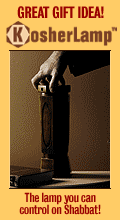
| ||||
Electric Space HeatersWhen the cold weather starts to creep up on us, we are all looking for a good way to keep warm, and at the same time save money. With the rising cost of heating, many homeowners think twice before putting on the central heating to heat up the whole house while most of the rooms remain empty, or when remaining in the house only for a short amount of time. Even when the central heating is on, there is always a room or a corner that remains chilly and could use a little more heat. This is where the portable electric space heaters steps in. They are an effective and convenient way to add supplementary heating to a chilly room or to heat a small unheated space. Advantages Over Other Types Of Space Heaters
Electric heaters have many advantages over other types of heaters such as gas or
kerosene. Not only do they cost significantly less to buy, but they are much
safer. They don't have open flames, use dangerous fuels, or produce carbon
monoxide. There is no gas piping needed nor any other special installations.
Things To Look For In A HeaterThere are a number of things that you should look for when choosing a space heater.
1. Make sure that the model is steady and does not tip over easily. Basic Types of Electric Space Heaters
Radiant Heaters
A variety of heating elements, such as quartz, metal coils tubes, and halogen
lamps, are used to emit the radiated heat. Most models use reflectors to focus
that heat in a certain direction. Objects must be within the heater's line of
sight to feel the heat.
Convection Heaters
Although using convection heaters, by virtue of their design, do not pose as much of a potential danger as radiant heaters, they can still be a safety hazard, especially when children are running around the house. |
||||
Fan Heaters
Oil Filled Radiator Heaters
Oil filled radiators have become a popular choice for many, due to the fact that
they are reliable, stable, quiet and efficient. The oil may take a little time
to heat up, but once hot, stays hot and uses relatively little power to stay
that way. The thermal mass of oil holds heat well, minimizing fluctuations in
temperature. Although the outside of the radiator can get very warm, these
heaters don't get so hot as to cause accidental burns. Radiators work like
convectors, depending on the natural flow of the air to circulate the heat.
There are no fans to cause noise. They also give off some radiant heat.
Ceramic Heaters
Relatively new type of heaters, ceramic heaters are fan heaters that utilize a special ceramic heating element. They provide directional space heating. The fan helps distribute the heat throughout the room, while models with the oscillation function distribute directional heat over an even larger area. Some of the disc heaters are equipped with a rheostat that sends full voltage to the element when the room is cold, and as it heats up, slows down its output of electricity to the fan, saving electricity. Safety Tips For Using Space Heaters
|







